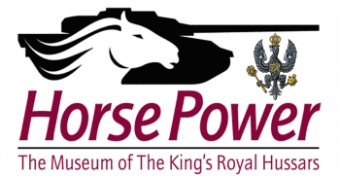The Battles of El Teb and Tamai
In 1879, the British government (led by Benjamin Disraeli) had bought the Suez Canal and thus established effective British (and French) control over Egypt. Officially, that country was part of the Turkish Empire, but bankruptcy had led to anarchy and the British and French stepped in. However, their control was remote and in 1882 an Egyptian nationalist, Ahmed Arabi Bey, led a revolt by the Egyptian army, which eventually resulted in the British (trying to prevent French control over a strategically vital country) sending an expeditionary force.
Although British control was swiftly imposed, events in the Sudan took over. At the time, Sudan, to the south, was controlled by Egypt, but a demoralised Egyptian army was annihilated by forces led by the Mahdi in late 1882, laying the way open to extremist Islamic forces entering Egypt. To counter this, General Charles Gordon – a hero of the Victorian times – was sent to Khartoum (the Sudanese capital) to bring out the beleaguered Egyptian garrison. Unfortunately, he was trapped there.
A former commanding officer of the 10th Hussars, Colonel Valentine Baker, was appointed to command the Egyptian army and given the task of suppressing the Mahdi and his general, Osman Dinga. However, the Egyptian army was no match for Dinga’s men; poorly trained and officered, and unpaid, many men had to be taken to the battle of El Teb in chains and without rifles. The battle (4th February 1884) was a disaster and the force of fewer than 4,000 lost over 2,500 Egyptians killed.
The British reacted by sending a strong force to the Sudan. The force was joined by the 10th Royal Hussars, who were on their way home from India and found themselves diverted en route. They had no horses with them, so Baker gave them 300 horses, allegedly “…quite untrained, and it seemed that those that were, understood only one movement, that of retreating in face of the enemy.”
A force of 4,000 British troops, under Major General Sir Gerald Graham, VC (“… with the courage of a lion and the modesty of a young girl”) was assembled to exact revenge, and on 29th February 1884, the second Battle of El Teb took place. The 10th Hussars and the 19th Hussars formed the British cavalry brigade and saw heavy fighting against a fanatical enemy.
The story of Private Hayes, a bandsman of the Tenth, stands out. A noted boxer for the regiment, he found his horse wouldn’t close with the enemy (who were using Hippopotamus-hide shields), so he dismounted and attacked several with his fists and sword, before mounting again. A year later he was decorated with the Distinguished Conduct Medal by Queen Victoria, and also appeared in a poem in the magazine, Punch.
The advance to the battle had been across the site of the earlier action, and the bodies of about 2,500 Egyptians were still scattered there. The conditions can hardly be imagined, and many cavalrymen were sick as they rode. When the second battle ended, over 2,000 of Dinga’s men were buried.
The British cavalry commander, Sir Herbert Stewart, was criticised after the battle for not controlling his regiments better; they were attacked several times by Sudanese who had lain hidden from sight and it was felt Stewart had been too impetuous in ordering his men to charge. In one of these assaults, Major M M Slade was surrounded by Mahdists and killed, his body later being found (by his brother) with seven spear wounds. Of thirty British deaths, twenty were in the two cavalry regiments, the Tenth having two officers and four men killed.
On 2nd March the Tenth sent men to reconnoitre Dinga’s camp nearby, and although it was empty, the Hussars brought back all the guns and equipment captured at the first Battle of El Teb, and destroyed over 1,300 rifles found there.
Following this victory, the British pursued Dinga to his camp at Tamai where a further battle took place on 13th March. Although present, the cavalry played little part in this action and suffered no losses. Over 100 British were killed, and it is thought 2,000 Mahdists also died.
The British victory was complete, but the Mahdi and Dinga were both still at large (it was to be sixteen years before Dinga was captured). The government at home did not wish to be involved in a long campaign, so withdrew all but a small force from the country, leaving Gordon in Khartoum to organise the security of Sudan. Mahdist forces besieged Khartoum in late March and despite a relief expedition being sent in August, in January 1885 Gordon was killed.
The 10th Royal Hussars continued their journey to England and on 21st April 1884 arrived at Portsmouth on HMS Jumna the same ship in which they had sailed to India in 1873. For their service in Sudan the Tenth were granted the Battle Honour ‘Egypt 1884’, and all those who took part were awarded a campaign medal by Queen Victoria and a medal known as The Khedive Star (Khedive being the title of the ruler of Egypt).


